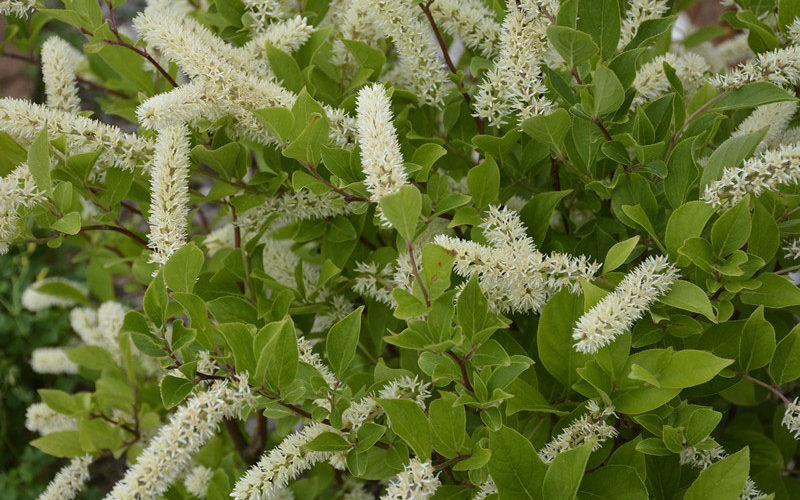Even native gardening is a science experiment
AMANDA BANCROFT
Making Ripples
Native bushes are a great alternative to exotic invasive hedgerows. These shrubs are experienced survivalists, as long as we plant them in a spot where they would naturally thrive without human assistance. There are many options renowned for special features and hardiness, but sometimes even natives need a little extra care.
Their first year getting established in a new location is the most important. Even though they are basically ready to survive on their own without much water or fertilizer, regular watering during the first year is sometimes crucial for success. Problems like leaf spot and insects eating the leaves are possible even with native bushes.
Shrubs like New Jersey Tea and Sweetspire can offer the gardener many rewards in addition to contributing to a biodiverse ecosystem. The leaves of the New Jersey Tea bush, as its name suggests, are an alternative to black tea. They were brewed by colonists during the years after the Boston Tea Party. New Jersey Tea (Ceanothus americanus) attracts hummingbirds, birds, butterflies and bees with its springtime balls of white blossoms. It’s also a host plant for butterflies like the spring and summer azures and mottled duskywing.
At least that’s how it’s supposed to work. But sometimes, the bush loses all its leaves, doesn’t grow, becomes infested with pests or develops leaf spots. Problems can be caused by a variety of insects, molds and fungus, so it’s difficult to know what your plants are up against unless an expert can see photographs. If possible, send photographs to an online forum or community for gardeners; usually, a specialist can help identify the problem.
Sweetspire (Itea virginica) is showy, with arching summer flowers that are white and fragrant and bright red fall foliage. It tolerates sun or shade, is deer and drought resistant, and is well-adapted to moist soil (it grows enthusiastically in our graywater garden). It’s noted by some to be virtually disease-free. But it may not always bloom abundantly despite receiving full sun, and it may also develop leaf spots. These are caused by a fungus that thrives in hot humid air and soggy soil that isn’t getting enough oxygen through the mulch. Rainy weather can contribute. Some gardeners remove any diseased-looking leaves or pick up the ones that have fallen, to reduce the amount of spores in the soil. However, sweetspires are unlikely to die from leaf spots; it’s mostly a cosmetic issue that may resolve itself (and I have witnessed this magic).

Columnist Amanda Bancroft’s dwarf “Little Henry” Sweetspire tolerates sun or shade, is deer and drought resistant, and is well-adapted to moist soil. (Courtesy Photo)
Much of the information on plant care is contradictory both online and when talking to gardeners. You might buy a plant and be told that it will only grow three feet, bloom in the spring, produce berries in fall, require full sun and moist soil. But you may discover that the plant grows six feet, did not bloom in the spring or produce berries in fall, requires shade from intense afternoon summer sun and prefers well-drained dry soils. Faced with this conundrum, perhaps it’s best to view planting as a science experiment, observe your plants to see if they do what you’d expect them to do, and make adjustments if they don’t.
If your native bushes don’t thrive even in the correct location under the best conditions, experiment. Try a new location (only if that particular native shrub can tolerate transplanting, and only during the right time of year for that species). Get a pH test to see if your soil is too alkaline or acidic for the plants growing there. Contact a nursery that specializes in native plants or an organization that promotes native ecosystems. If all else fails, you can plant a new type of native that may be better suited to that spot.
Amanda Bancroft is a writer, artist, and naturalist living in an off-grid tiny house on Kessler Mountain. She and her husband Ryan blog about their adventures and offer tips to those wanting to make a difference at www.RipplesBlog.org.










